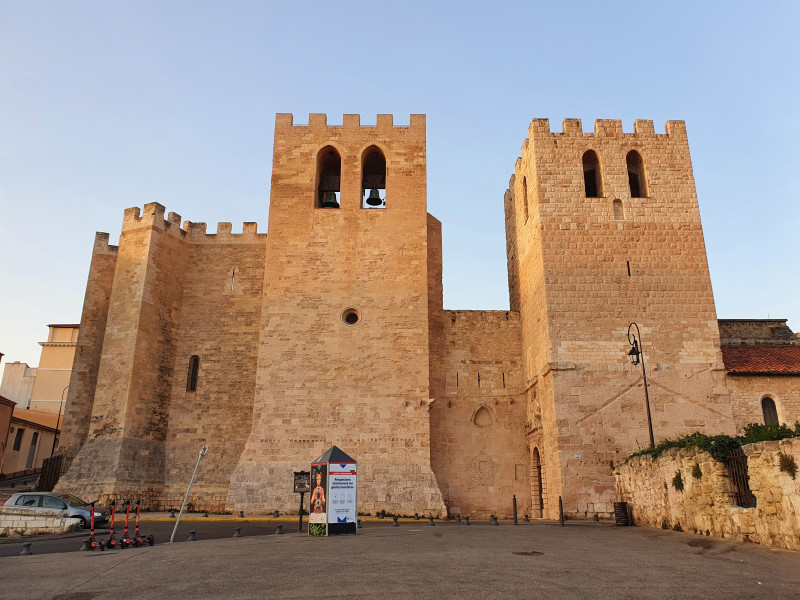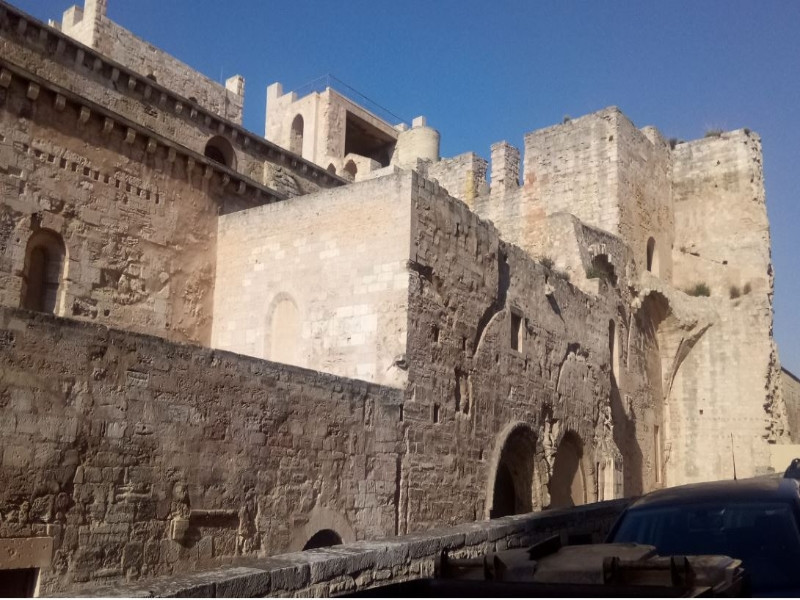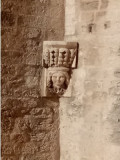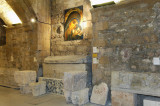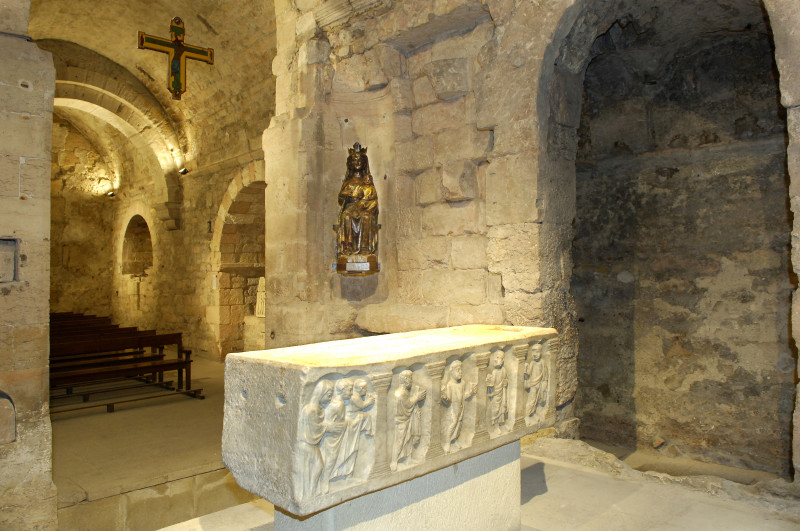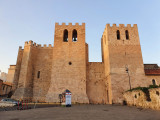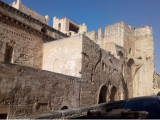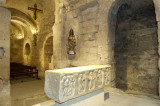Saint-Victor Abbey
Historic site and monument Religious heritage AbbeyPresentation
The bishop of "Aix", Lazarus, (whom tradition has long confused with Saint Lazarus, a disciple of Jesus) holds in the region a monk who came from Palestine after a long retreat in Egypt with the Desert Fathers.
The bishop of Aix, Lazarus (tradition has often confused him with Saint Lazarus, disciple of Jesus), retained in the region a monk from Palestine after a long retreat in Egypt with the Desert Fathers.
Proculus, bishop of Marseille (380-430), welcomes John Cassian.Cassian, an anachorete, certainly started monastic life in Marseille. However, he is probably not the founder of the abbey, as the archaeological evidence of Saint Victor only goes back to the end of the 5th century. Worship is organized on the site of the present abbey, around a tomb which is venerated. Tradition, once again, has it that it contains the relics of the eponymous martyr of Marseille from the 4th century.
In reality, the crypta preserve highly valuable archaelogical evidence proving the presence of a quarry exploited in Greek times, then of a Hellenic necropolis (2nd century BC) which remained in use in the Christian era. It is lost between the 7th and the end of the 10th century. Saint Victor, like the whole of western Europe, has dark periods with Norman and Saracene invasions.
In 977, monastic life begins again, thanks to bishop Honorat and the first Benedictine abbot Wilfred who submitted the abbey to the rule of Saint Benedict. In 102, a Catalan monk, Isarn, becomes master of the novices and starts extensive building. He constructs the first upper church to which the tower belongs (called Isarn tower), today the access to the church. The main altar is consecrated in 1040. From the end of the 12th century to the 13th century, the abbey is entirely rebuilt according to the rules of the Romanesque builders.
Guillaume de Grimoard, then abbot of Saint Victor (he became pope in Avignon under the name of Urban V) fortified the monastery. The entire complex is included in the port defense system by his successor Grégoire XI.
From the 11th century until the 18th century, Saint Victor has total hegemony over the Christians of the Mediterranean area, from Catalonia to Italy.
Gradually, monastic fervour diminishes and the abbey is secularized by order of the pope in 1739.
The Revolution transforms the church into a fodder store, a prison and a barracks. This avoids its demolition. The abbey is again used for worship under the Premier Empire and restored in the 19th century.
The church was made into a minor basilica in 1934 by Pope Pius XI.
Every year at Candlemas, there is an important pilgrimage at Saint Victor. On 2 February, in the morning, a procession leaves the Old Port for Saint Victor along Rue Sainte. The black Madonna kept in the crypta is arrayed in her green cloak and is presented to the public on the square in front of the church. The archbishop blesses her, celebrates mass and then goes to the "Four des Navettes".
Proculus, bishop of Marseille (380-430), welcomes John Cassian.Cassian, an anachorete, certainly started monastic life in Marseille. However, he is probably not the founder of the abbey, as the archaeological evidence of Saint Victor only goes back to the end of the 5th century. Worship is organized on the site of the present abbey, around a tomb which is venerated. Tradition, once again, has it that it contains the relics of the eponymous martyr of Marseille from the 4th century.
In reality, the crypta preserve highly valuable archaelogical evidence proving the presence of a quarry exploited in Greek times, then of a Hellenic necropolis (2nd century BC) which remained in use in the Christian era. It is lost between the 7th and the end of the 10th century. Saint Victor, like the whole of western Europe, has dark periods with Norman and Saracene invasions.
In 977, monastic life begins again, thanks to bishop Honorat and the first Benedictine abbot Wilfred who submitted the abbey to the rule of Saint Benedict. In 102, a Catalan monk, Isarn, becomes master of the novices and starts extensive building. He constructs the first upper church to which the tower belongs (called Isarn tower), today the access to the church. The main altar is consecrated in 1040. From the end of the 12th century to the 13th century, the abbey is entirely rebuilt according to the rules of the Romanesque builders.
Guillaume de Grimoard, then abbot of Saint Victor (he became pope in Avignon under the name of Urban V) fortified the monastery. The entire complex is included in the port defense system by his successor Grégoire XI.
From the 11th century until the 18th century, Saint Victor has total hegemony over the Christians of the Mediterranean area, from Catalonia to Italy.
Gradually, monastic fervour diminishes and the abbey is secularized by order of the pope in 1739.
The Revolution transforms the church into a fodder store, a prison and a barracks. This avoids its demolition. The abbey is again used for worship under the Premier Empire and restored in the 19th century.
The church was made into a minor basilica in 1934 by Pope Pius XI.
Every year at Candlemas, there is an important pilgrimage at Saint Victor. On 2 February, in the morning, a procession leaves the Old Port for Saint Victor along Rue Sainte. The black Madonna kept in the crypta is arrayed in her green cloak and is presented to the public on the square in front of the church. The archbishop blesses her, celebrates mass and then goes to the "Four des Navettes".
Accessible for disabled
Opening period (s)All year round, daily between 9 am and 6 pm.
General information
- Parking :
- Parking nearby
- Client profile :
- Groups
- Price :
- Free
- Style :
- Roman
- Park :
- Calanques National Park
Services, Tours, Activities and entertainment
- Shop :
- Shop
Contact
Saint-Victor Abbey
3 Rue De l'Abbaye
13007
Marseille
Mob : +33 6 99 15 96 62
- Spoken language(s) :
Tarifs
Free of charge. Admission: free
Access to crypt: €3.
Access to crypt: €3.

Destination
Abbaye Saint-Victor
3 Rue De l'Abbaye
13007
Marseille
GPS coordinates
Latitude : 43.290088
Longitude : 5.365365



